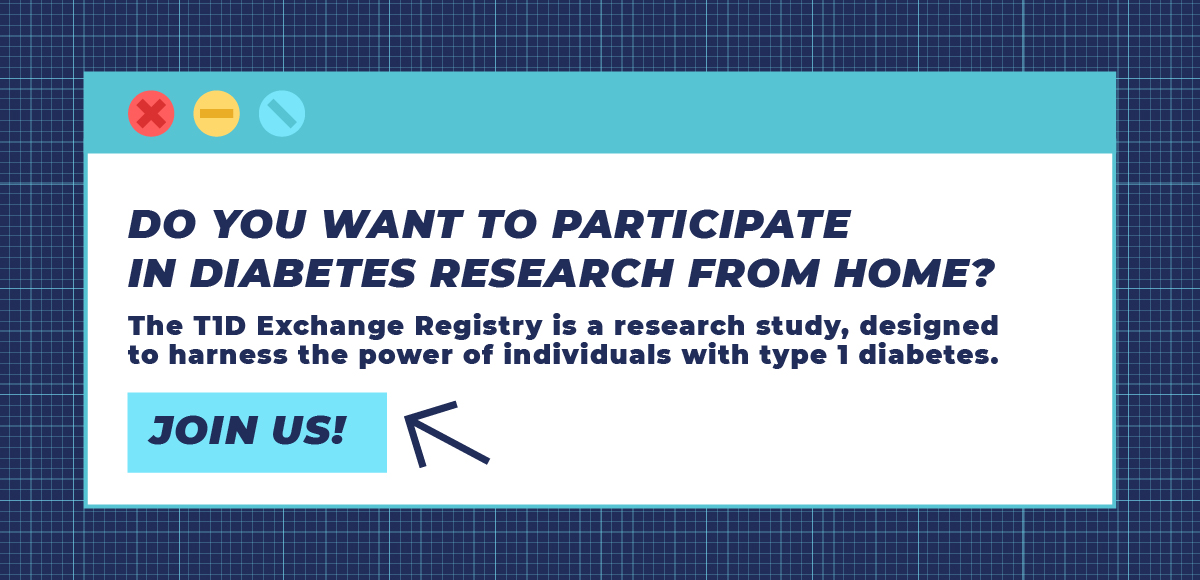
Sign up for a new account.
And get access to
The latest T1D content
Research that matters
Our daily questions
Sign up by entering your info below.
Reset Your Password
Don't worry.
We will email you instructions to reset your
password.
Finding and choosing a health insurance plan for an individual or a family faced with the medical demands and costs of living with type 1 diabetes (T1D) can be incredibly overwhelming.
A complicated system for even those without a chronic illness, a person with T1D must consider the costs and coverage a plan offers for healthcare needs including:
- insulin
- test strips
- CGM technology
- pump therapy
- non-insulin diabetes medications
- emergency care (even a 24-hour stomach bug can land a person with T1D in the hospital for a few hours)
- annual check-ups with specialists for your eyes, kidneys, skin, feet, etc.
- other conditions common with T1D including hypothyroidism, arthritis, hypertension, etc.
Choosing the wrong plan, or not knowing how to advocate for the coverage you need within an existing plan, can cost you thousands of dollars or leave you frustrated with trying to get coverage for the care you need.
Diabetes Dad Creates Study on Financial Burdens of T1D
Michael Gambrel has set-out to study and determine how well individuals and families faced with the healthcare costs of T1D understand health insurance when choosing a plan, and their ability to meet the lifelong month-to-month expenses of T1D.
“I began studying for my doctorate at Franklin University in Healthcare Administration,” explains Gambrel, while living in Indianapolis.
“After my first semester there, my daughter went into the hospital, spent a day in the ICU, and was diagnosed with type 1 at 6 years old. They basically said here’s how you’re gonna care for it and three days later we were out on our own with no previous experience or family history.”
Today, his daughter is 10 years old, and Gambrel has spent the last 4 years learning the finer details of how different health insurance plans work and what most individuals and families living with T1D need but may not understand.
“What are the health insurance needs of a person with type 1? What are the most common misunderstandings? What are the problems?”
When Gambrel returned to continue studying for his doctorate, he refocused his dissertation on the potential connection between the education provided to T1D caregivers and the stress that caregivers experience concerning financing T1D.
“I was studying healthcare administration and it was still difficult and confusing for me,” said Gambrel. “I can’t imagine how someone with zero experience in this would know what to do.”

To contribute to his research, find the 20-minute survey here.
4 Parts of Any Health Insurance Plan to Consider with T1D
“The general public has relatively little understanding of how health insurance is set-up,” said Gambrel after collecting data from his study surveying families with T1D. “They know some of the key terms, but they don’t understand how it all works together.”
Gambrel reports that for most individuals and families, the biggest expenses rank in this order, starting with the greatest expense:
- Insulin: also the fastest-increasing expense
- Non-insulin prescriptions: including test-strips, pumps, CGMs, and other medications
- Professional services: including check-ups, annual eye exams, etc.
- Out-patient / In-patient services: including visits to the ER, treatments, etc.
Before selecting any plan, it’s important to sit down and think about all of your anticipated medical costs (insulin, test-strips, pump supplies, etc.) and potential medical costs (like visits to the ER).
The premium:
This is the monthly payment for a health insurance plan, but it doesn’t mean it’s the only expense you’ll pay, like your deductible and copays for medications, treatments, and appointments.
The higher the premium (i.e. the more expensive your monthly bill is), the lower your deductible will likely be. (More on deductibles below.) For people with T1D who have a lot of ongoing healthcare needs beyond prescriptions and routine check-ups, it may save you significantly to choose a higher premium so your healthcare expenses are covered sooner in the year.
The lower the premium, the higher your deductible will be which means you’ll have to spend more money from your pocket on your healthcare needs before your insurance plan truly kicks in. This can make the first half of the year financially overwhelming if you have regular medical expenses and healthcare needs.
The formulary:
The formulary in any health insurance plan is essentially the list of prescription drugs covered by the plan. Often referred to as the “drug list,” it’s very important to know that just because your preferred type of insulin, for example, isn’t on the list doesn’t mean you can’t use it or that you can’t get them to cover it.
The formulary can be frustrating for many because it can change from year-to-year based on behind-the-scenes negotiations between pharmacy benefit managers (PBMs) and the manufacturers of that drug (Sanofi, Novo Nordisk, etc.) These negotiations are the reason why the price of medications can change dramatically, and why your health insurance might suddenly tell you that they’ll no longer cover the insulin you’ve been using for the past 10 years, attempting to force you to switch to another type.
“Everything can be appealed,” reminded Gambrel. “The very first time we were working to get coverage for my daughter’s Omnipod insulin pump, they said it wasn’t intended for her age and they wouldn’t cover it. We appealed this immediately.”
An appeal starts with your healthcare team sending a statement to the health insurance company explaining that this insulin pump or that type of insulin, etc. is essential to that patient’s healthcare and wellbeing.
“Just remember that appealing takes time and perseverance.”
The deductible:
This is how much you’ll pay before they cover anything, but there can be certain exceptions, like routine check-ups and some prescriptions. When choosing a plan, the deductible is critical.
For example, the deductible of the plan you chose might be $2,500. This means you’ll have to pay $2,500 out-of-pocket (ie: from your personal bank account) of your healthcare expenses before your insurance plan truly kicks-in. If, for example, you visit the ER in February for intravenous fluids during a short bout with a stomach bug, you’ll likely hit your deductible completely, and your ongoing expenses for the rest of the year will be copays for services and prescriptions.
Typically, the lower the monthly premium is, usually the higher the deductible will be. And vice versa. (But it’s important to read the fine print, always!)
Some plans will also have a deductible for an individual vs. for the whole family. You might also see a deductible for prescription medications vs. other medical expenses.
The copay:
A copay or copayment is the amount you’ll pay for medications and doctor’s visits after you’ve hit your deductible. For instance, a visit to a specialist (like an endocrinologist) might be $25 or $50 or $100 depending on the plan you’ve selected.
When you first enroll in a new healthcare plan, call the company and get an in-depth understanding of what you can do to keep copays at the lowest costs. For example, your prescription medications might have an extra fee if you don’t use a specific pharmacy. This is based on negotiations made between the health insurance company and a pharmacy. Knowing these kinds of details could save you $60 of additional charges for a single medication. Take the time to get the facts.
And remember, at the end of it all, when a giant medical bill lands in your lap and it doesn’t seem right or fair, speak up.
“You can also negotiate bills you receive,” said Gambrel who’s battled successfully to reduce large medical bills. “Look at everything and ask yourself, ‘Does this seem right?’”
Navigating the costs associated with T1D can be challenging and often very frustrating, but it’s a bit easier when you thoroughly understand the details of your insurance plan and how these systems work.
Most importantly, don’t be afraid to advocate for yourself to get the care you need. Ask for help, do your research, and speak up when something seems unfair.









5 Comments